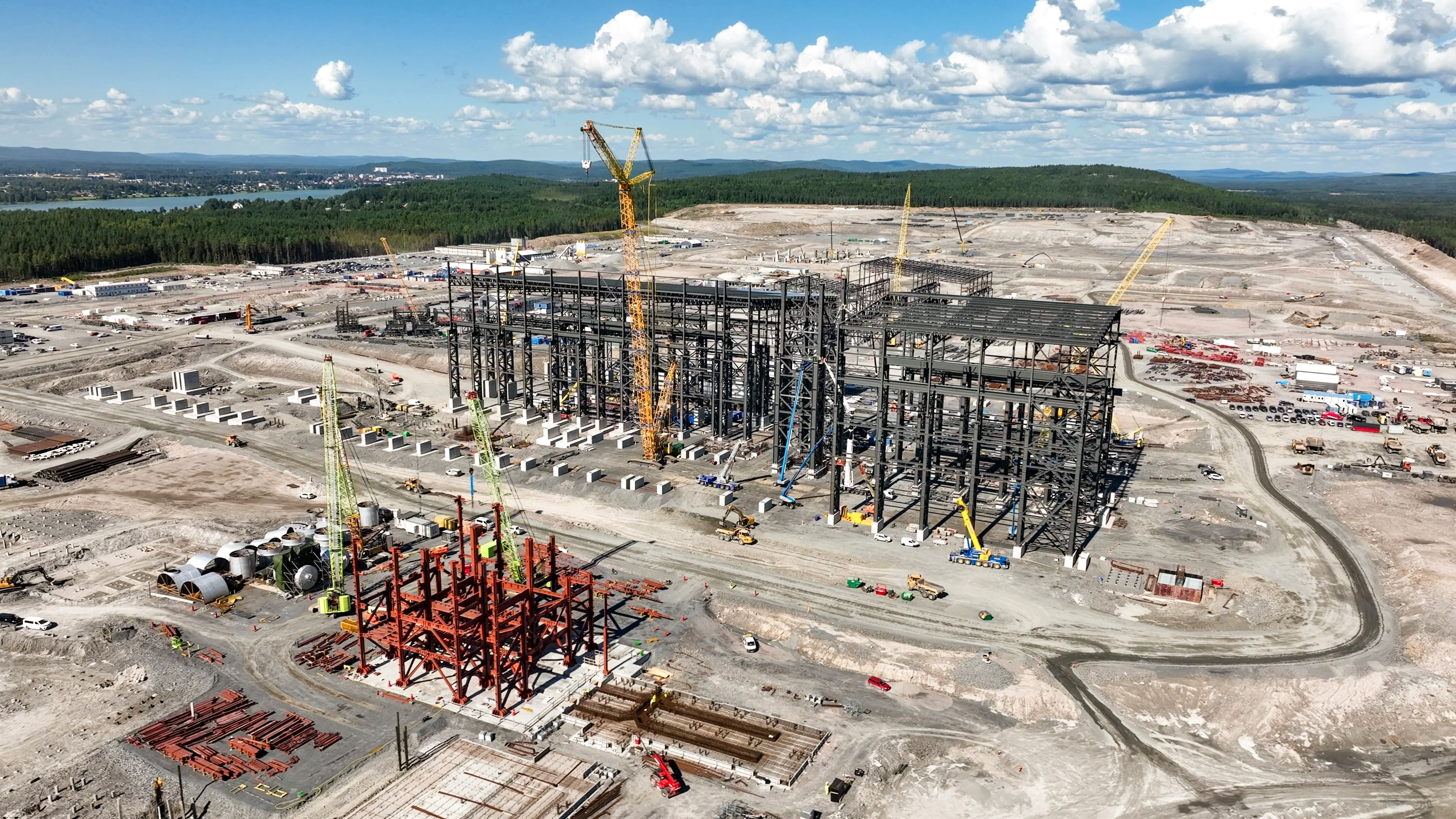Green steel: 10 Breakthrough Technologies 2025
Making steel produces a lot of greenhouse-gas emissions. Now, construction is underway in Sweden on an industrial-scale plant that will emit almost zero carbon dioxide.

WHO
Boston Metal, LKAB, Midrex, Stegra
WHEN
1 year
A method for using hydrogen made with renewable power to produce steel could help clean up the industry, which accounts for about 8% of the world’s carbon emissions.
Most steel is still made in coal-based blast furnaces that churn out about two tons of carbon dioxide or more for every ton of steel. A newer commercial technique called direct reduction, which uses natural gas to turn iron ore into iron (a key ingredient in steel), yields about a 40% reduction in emissions. But that’s still a lot of carbon pollution.
So several companies are developing ways to use hydrogen made with renewable power to react with iron ore to make iron—the most energy-intensive and dirtiest step of the steelmaking process. These processes could, in theory, produce close to zero emissions.
Explore the full 2025 list of 10 Breakthrough Technologies.
Stegra, a Swedish startup, has raised nearly $7 billion to build such a plant in Boden, in northern Sweden. (In September, the company renamed itself from H2 Green Steel.) It will make hydrogen by splitting water with electrolysis, using clean electricity supplied by a mix of wind and hydropower. The plant is on track to begin production in 2026, which could make it the first industrial-scale operation of its kind.
Hybrit, a technology developed by the steelmaker SSAB, the mining company LKAB, and the energy company Vattenfall, uses a similar process to make green steel. LKAB is now constructing a plant in Gällivare, Sweden, adjacent to its iron-ore mine. Those plans have been delayed, however, by challenges in getting an environmental permit.
Another way to make green steel is to break the bonds in iron oxide by running a current through a mixture of iron ore and an electrolyte, separating out the purified metal. If you have a clean source of electricity, this process could have an extremely small carbon footprint. Boston Metal aims to commercialize a version of it, which it hopes to license in 2026.
The Stegra plant will produce 4.5 million metric tons of steel each year when it’s fully up and running—a small dent in the several billion metric tons made annually around the world. But showing that steel can be made without huge carbon emissions, and that customers eager for a green product will pay a premium, will be a promising start to cleaning up the industry.
Deep Dive
Climate change and energy
What China’s critical mineral ban means for the US
The nation has signaled it’s prepared to hit back harder still, in ways that could inflict serious economic pain on its biggest economic rival.
What’s next for nuclear power
Global shifts, advancing tech, and data center demand: Here’s what’s coming in 2025 and beyond.
Why the next energy race is for underground hydrogen
Hydrogen can be used in chemicals and as a green fuel. Vast underground stores could help make it an economical option.
China banned exports of a few rare minerals to the US. Things could get messier.
Gallium and germanium are used to make semiconductors. Could battery materials be the next target?
Stay connected
Get the latest updates from
MIT Technology Review
Discover special offers, top stories, upcoming events, and more.